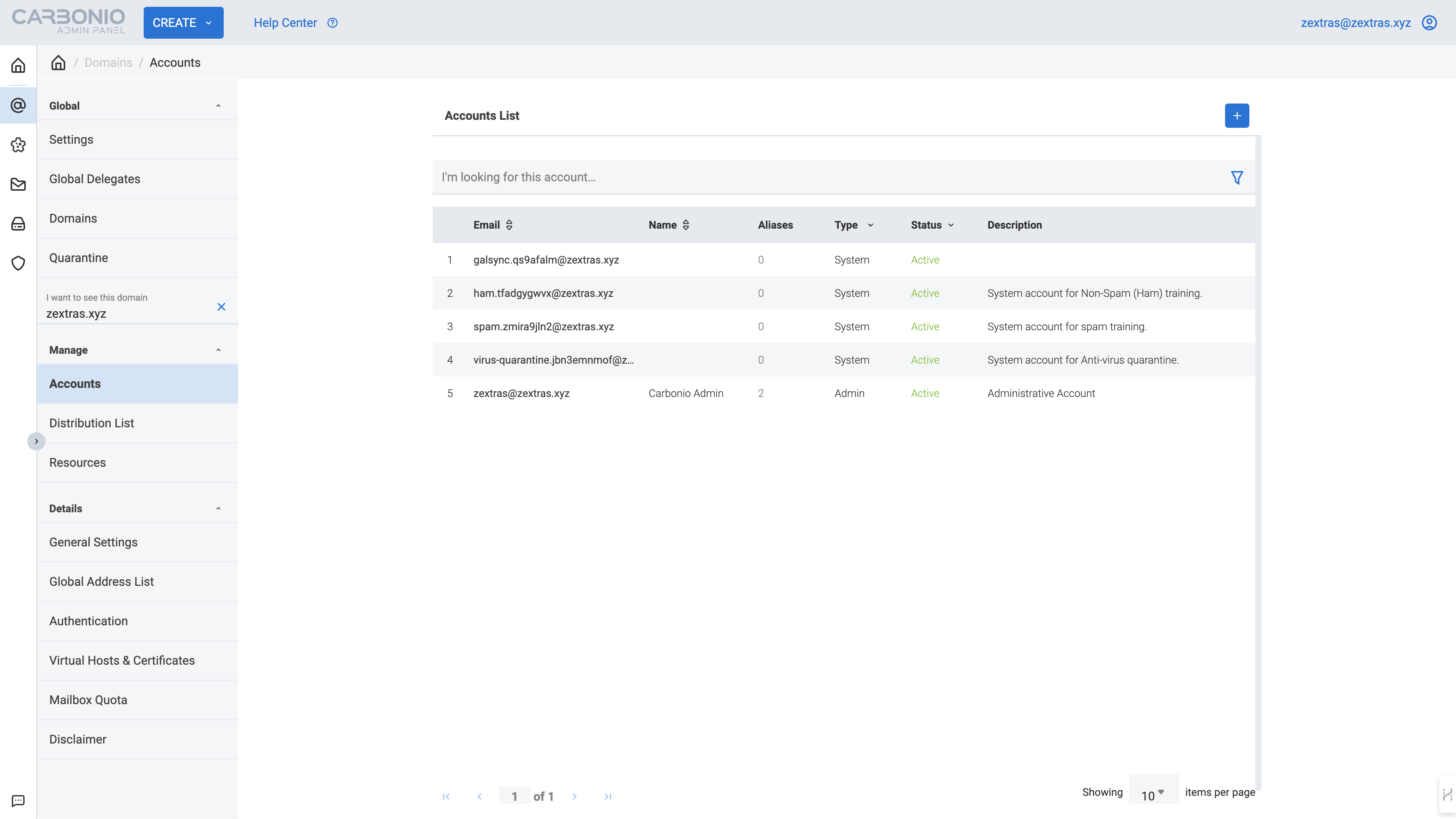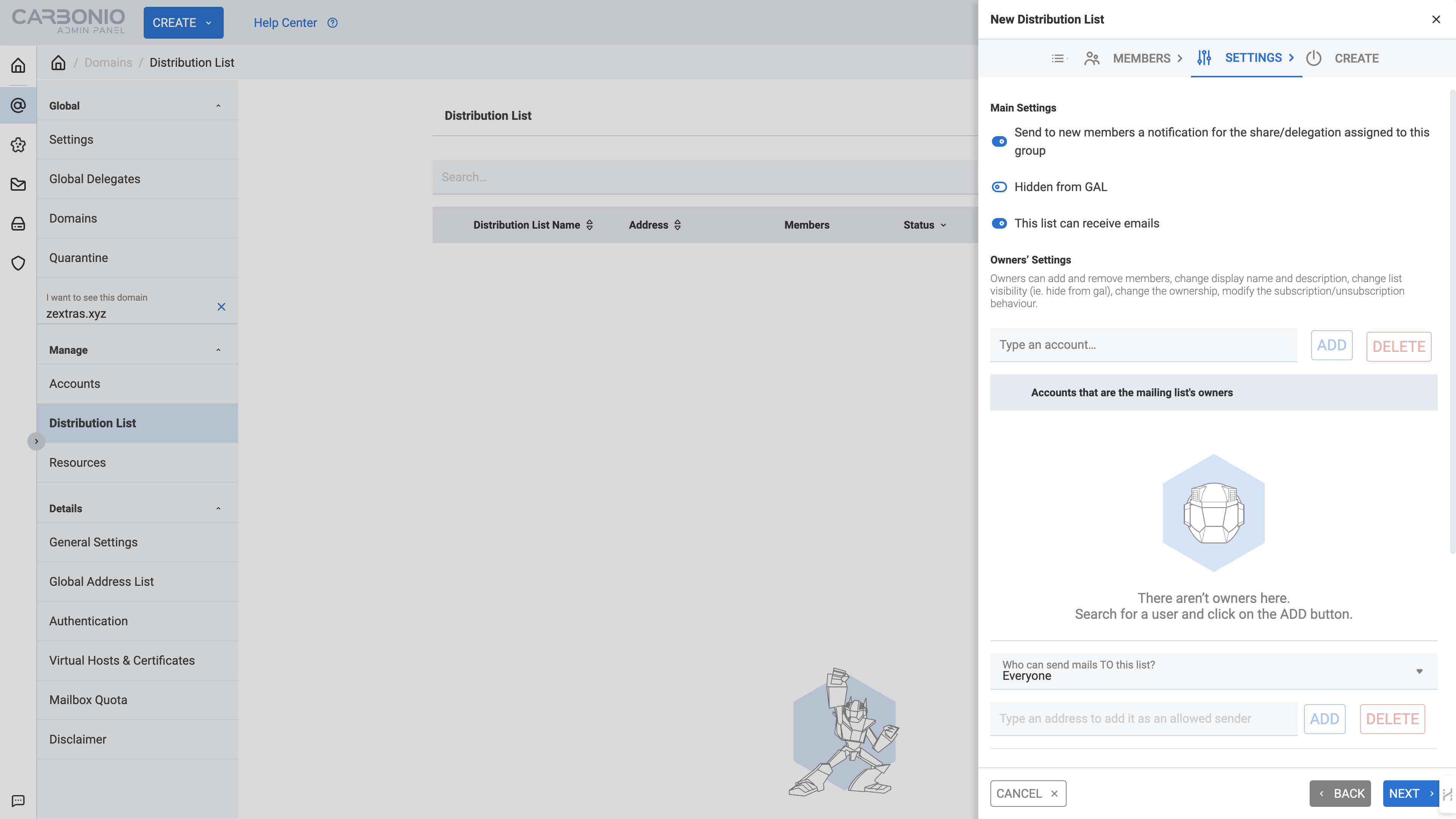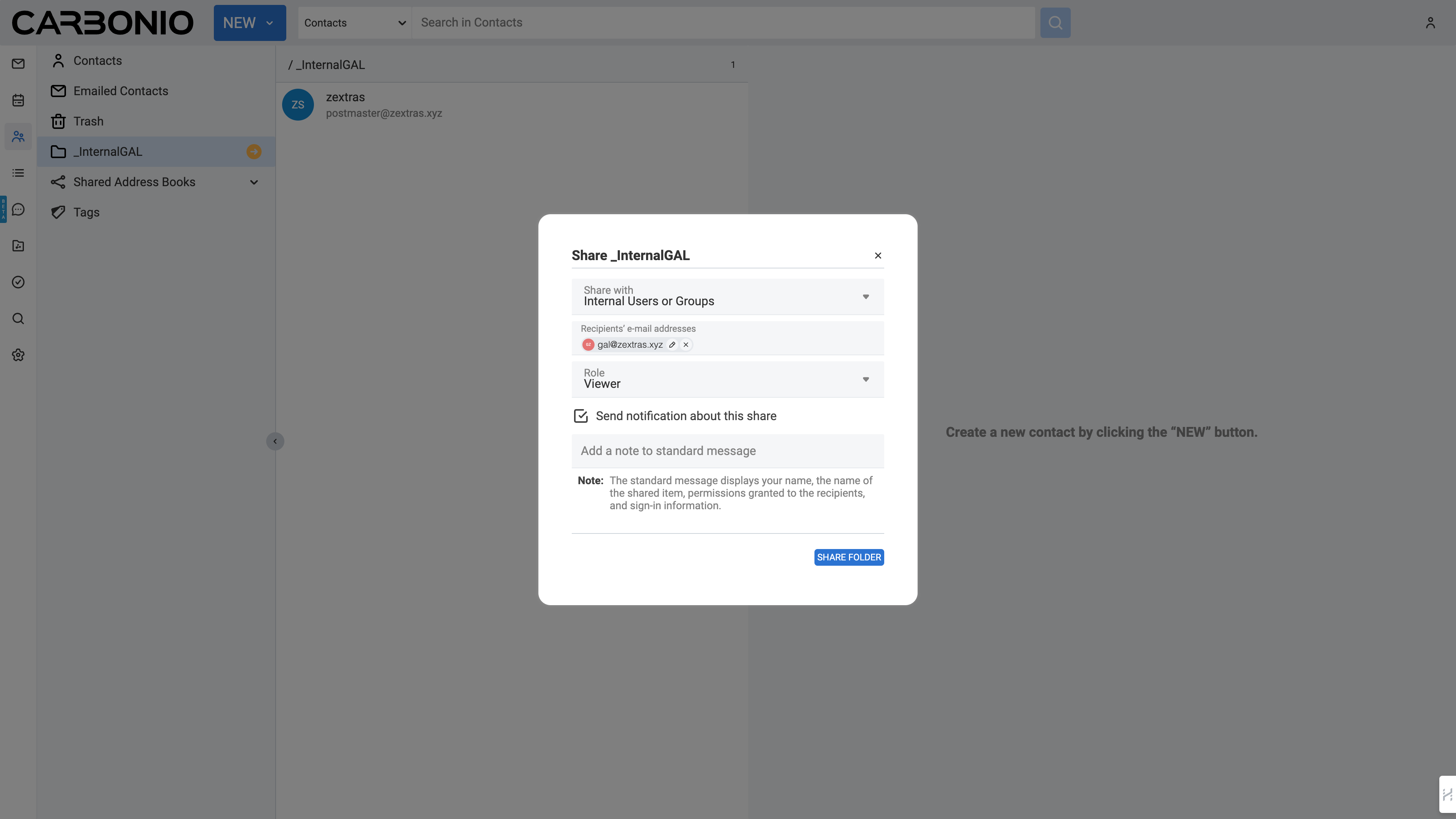One of the main functions of a corporate server is the global address book or GAL – a list of email addresses of all enterprise employees, which allows you to organize effective communication between them. Currently, by default, Carbonio CE GAL is only available as autocomplete. Starting to type the details of the desired employee, the user receives suggestions for auto-filling the contact and can select the desired one from the list. Many administrators prefer that users have a regularly updated address book in which the contacts of everyone in the organization automatically appear and are selectable. In this article, we’ll walk you through how to add such an address book to your Carbonio user accounts.
Creating a Static Mailing List
The global address book is generated automatically in the galsync system account. The name of this account depends on what domain it is in. So, in the domain created when installing Carbonio, the name of this account is obfuscated with additional characters. For example, galsync.qs9afalm@carbonio.local.
In all other domains, the name of the galsync system account is not modified and is, for example, galsync@carbonio.test

If you view the contents of a galsync account using the View Mail function, then in each of them there will be a default book created _InternalGAL, which contains the list of contacts.

The task comes down to providing all domain users with access to this address book. This can be done in several different ways. Let’s describe them one by one.
1. Creating a Static Mailing List
The essence of the method is to create a mailing list whose members are domain users who need to be granted access to the GAL. Sharing access to the address book is provided once to the mailing list and is automatically broadcast to all its members.
To implement this, you will need to create a mailing list and include an initial set of users.

Make sure your distribution list is set to receive emails when folders are shared.

After creating your mailing list, use the View Mail feature to view the contents of your Galsync account and open the address book sharing menu _InternalGAL

After clicking on the “Share folder” button, each member of the mailing list will receive a message, directly from which they can connect the global address book in one click. A similar letter will be sent to all users who will subsequently be added to the created mailing list.

The connected GAL will appear in the list of shared address books.

Pros: The advantages of this method include the ability to provide access to the GAL only to certain users, including those located in other domains. This method also allows you to delegate the process of sharing the global address book to junior administrators and makes the process of connecting it as simple as possible for end users.
Cons: The downside is the need to manually add new users to the mailing list.
2. Using the Command Line
A feature of the GAL address book is that initially read access to it is granted to all domain users, but it is not possible to mount it into the list of user address books using the graphical interface. You can mount a folder administratively from the command line as the zextras user.
The command that mounts the address book for the user has the form zmmailbox -A -z -m user@domain.tld cm --view contact -F# "/GAL" galsync@domain.tld "/_InternalGAL".
In order to automate the mounting of GAL in user mailboxes, let’s create a script that will mount the GAL one by one in the /GAL folder of each domain user:
for acc in $(carbonio prov -l gaa|grep @domain.test); do carbonio prov selectMailbox $acc cm --view contact -F# "/GAL" galsync@domain.test "/_InternalGAL"; done
Since the galsync account will also be included in the list of accounts, the script output will contain the error message ERROR: service.INVALID_REQUEST (invalid request: cannot mount your own folder). It is caused by an attempt to mount the _InternalGAL address book on the galsync account, which is already its owner.
The final result of executing this script is the appearance of the GAL address book in the lists of general address books of users.
Since the list of domain users is constantly being updated, it may be necessary to run this script again so that the GAL address book appears for new users. This can be achieved by re-executing the script after creating new users, or periodically executing the command using cron.
Pros: The advantage of this solution is the ability to fully automate the process without the need to perform any actions on the part of the user.
Cons: The downside is that when manually running the script or adding the shared address book _InternalGAL to users completely manually, this task cannot be delegated to junior administrators.
